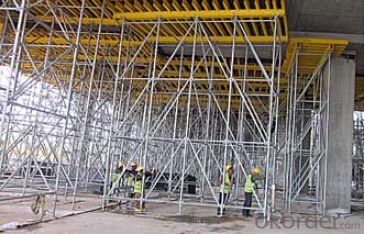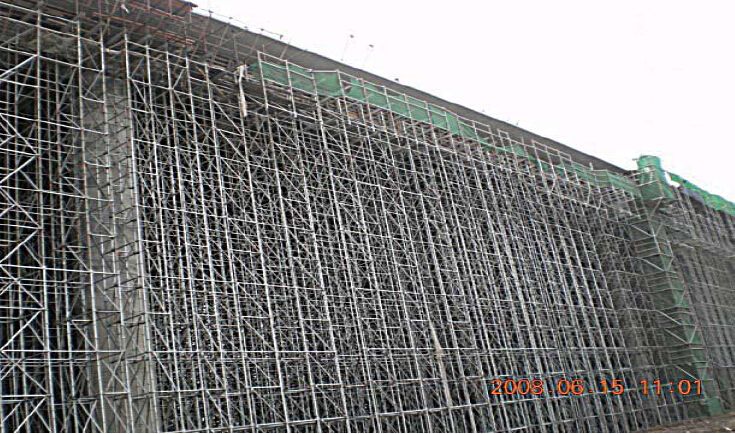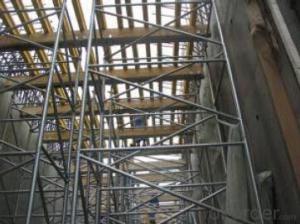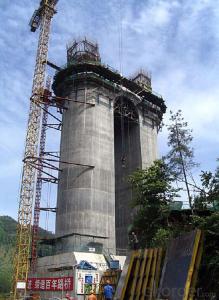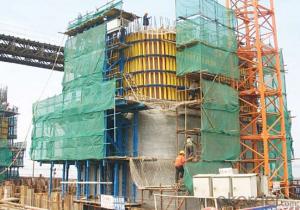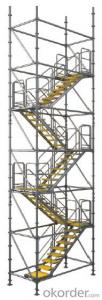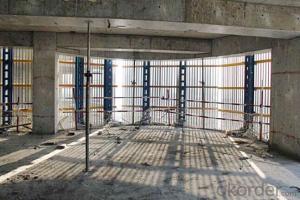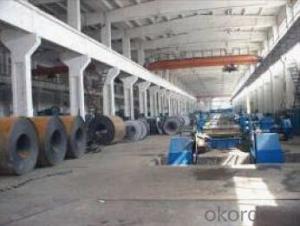Tower Scaffolding for formwork and scaffolding system
- Loading Port:
- Tianjin
- Payment Terms:
- TT OR LC
- Min Order Qty:
- 50 m²
- Supply Capability:
- 1000 m²/month
OKorder Service Pledge
Quality Product, Order Online Tracking, Timely Delivery
OKorder Financial Service
Credit Rating, Credit Services, Credit Purchasing
You Might Also Like
Tower Scaffolding
Shoring tower is an effective supporting system. It is easy to assemble and dismantlement, and
has excellent stability and bearing capacity. It has been widely used in the construction of industry
& residential buildings , bridges, tunnels and dam project, etc.
Characteristics:
◆ High degree of standardization.
◆ Easy storage and transportation
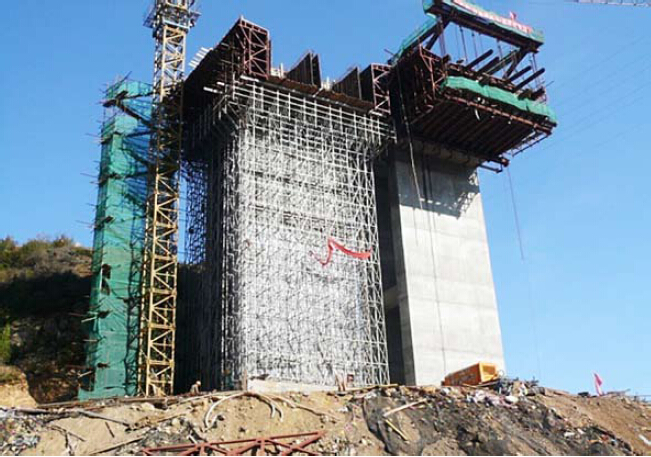
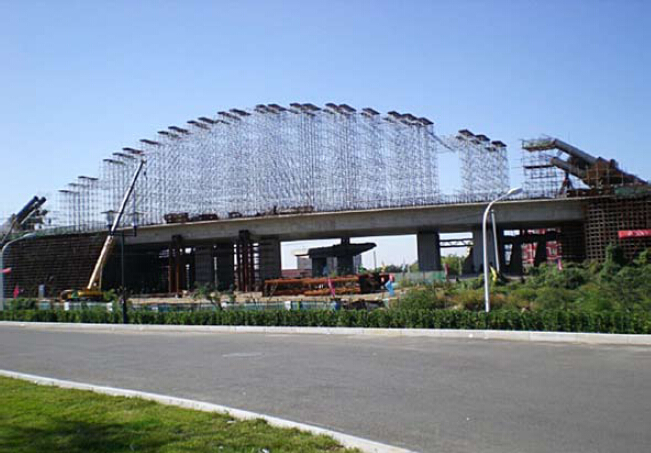
- Q: How does steel formwork perform in different weather conditions?
- Steel formwork performs well in different weather conditions. It is highly resistant to extreme temperatures, moisture, and UV radiation. This makes it suitable for use in both hot and cold climates. Steel formwork maintains its structural integrity and durability, ensuring consistent performance even in harsh weather conditions. Additionally, its non-absorbent nature prevents water damage or warping, making it a reliable choice for construction projects in various weather conditions.
- Q: How does steel formwork impact the overall project management?
- The overall project management can be significantly influenced by steel formwork in various ways. First and foremost, the durability and longevity of steel formwork allow for multiple reuses throughout the project, reducing the need for frequent replacements and repairs and saving both time and money. Furthermore, the use of steel formwork ensures a high level of accuracy and precision, guaranteeing that the concrete structures are constructed according to the specified dimensions and specifications. This not only enhances the quality of the project but also reduces the chances of rework or corrective measures, thereby saving time and resources. In addition, steel formwork offers greater flexibility and versatility compared to traditional wooden formwork. It can be easily adjusted and modified to accommodate changes in design or unforeseen circumstances during the construction process. This adaptability enables project managers to quickly and efficiently make on-site adjustments, keeping the project on track and minimizing delays. Moreover, the installation and dismantling process of steel formwork is known for its speed. This allows for faster construction cycles, enabling project managers to meet tight deadlines and complete the project within the scheduled timeframe. The quicker turnaround time also improves project efficiency and reduces overall project costs. Lastly, steel formwork is considered a safer option compared to other formwork materials, providing a stable and secure platform for workers and minimizing the risk of accidents and injuries. By prioritizing worker safety, project managers can maintain a productive and efficient work environment. In conclusion, the utilization of steel formwork positively impacts overall project management by enhancing durability, accuracy, flexibility, speed, and safety. This leads to improved project outcomes, reduced costs, and enhanced efficiency, ultimately contributing to the successful completion of the project.
- Q: Can steel formwork be used for temporary structures?
- Yes, steel formwork can be used for temporary structures. Steel formwork is durable, strong, and can withstand heavy loads, making it suitable for temporary structures such as scaffolding, shoring, and temporary supports. Its versatility and reusability make it a popular choice in construction projects requiring temporary structures.
- Q: How does steel formwork help in achieving a high-quality finish?
- Steel formwork helps in achieving a high-quality finish due to its ability to provide a strong and rigid structure for concrete placement. Its smooth and non-absorbent surface prevents the formation of air bubbles, resulting in a smooth and even finish. Additionally, steel formwork allows for precise and accurate shaping and alignment, ensuring the desired dimensions and contours of the final concrete product.
- Q: What are the considerations when designing steel formwork for water tanks?
- When designing steel formwork for water tanks, several considerations must be taken into account. Firstly, the formwork needs to be structurally strong and capable of withstanding the weight and pressure of the water it will contain. This involves carefully selecting the thickness and quality of the steel, as well as ensuring proper reinforcement and bracing. Additionally, the formwork should be designed to allow for easy assembly, disassembly, and reusability. This is important as water tanks may need to be relocated or replaced in the future. The formwork should have a modular design and be easily adjustable to accommodate different tank sizes and shapes. Furthermore, attention should be given to the waterproofing and leakage prevention of the formwork. This can be achieved through the use of appropriate sealing materials and techniques, ensuring that the tank remains watertight. Finally, considerations should be made for the ease of maintenance and inspection. The formwork should allow for easy access to the interior of the tank for cleaning and repair purposes. Properly designed access points, such as manholes, should be incorporated into the formwork design. Overall, designing steel formwork for water tanks requires careful consideration of structural integrity, ease of assembly and maintenance, waterproofing, and adaptability to various tank sizes and shapes.
- Q: What are the different types of steel used in formwork construction?
- There are several types of steel commonly used in formwork construction, including mild steel, high-strength low-alloy steel (HSLA), and high-strength steel. Additionally, stainless steel may be utilized in specific applications where corrosion resistance is required. The choice of steel type depends on factors such as the desired strength, durability, and cost-effectiveness of the formwork system.
- Q: Can steel formwork be used for industrial structures?
- Yes, steel formwork can be used for industrial structures. Steel is a strong and durable material that can withstand heavy loads and provide excellent support for large-scale construction projects. It is often preferred for industrial structures due to its high strength-to-weight ratio, resistance to fire and corrosion, and ability to be reused multiple times. Steel formwork systems offer flexibility, cost-effectiveness, and efficiency in constructing various types of industrial structures such as factories, warehouses, power plants, and refineries.
- Q: What are the considerations when designing steel formwork for industrial facilities?
- When designing steel formwork for industrial facilities, there are several important considerations that need to be taken into account. These considerations include: 1. Load-bearing capacity: Industrial facilities often house heavy machinery and equipment, so the steel formwork needs to be designed to withstand the weight and load placed on it. The formwork should be able to support the weight of the machinery while ensuring structural stability and safety. 2. Durability: Steel formwork should be able to withstand the harsh conditions often found in industrial facilities, such as temperature fluctuations, exposure to chemicals or corrosive substances, and heavy usage. It should be designed to have a long lifespan and require minimal maintenance to ensure cost-effectiveness. 3. Flexibility and adaptability: Industrial facilities often undergo changes, upgrades, or modifications over time. Therefore, the steel formwork should be designed to be flexible and adaptable, allowing for easy modifications or additions as required. This includes considering factors such as future expansion, reconfiguration, or relocation of machinery or equipment. 4. Safety: Safety is a crucial consideration when designing steel formwork for industrial facilities. The formwork should be designed to prevent accidents or injuries, such as by incorporating safety features like guardrails, non-slip surfaces, or adequate lighting. It should also adhere to relevant safety codes and standards to ensure compliance. 5. Ease of construction and dismantling: Steel formwork should be designed to be easily assembled and disassembled. This will not only save time during construction but also allow for efficient reusability of the formwork in future projects. Considerations like modular designs or prefabricated components can facilitate easier construction and dismantling processes. 6. Cost-effectiveness: Designing steel formwork for industrial facilities should also take into account cost-effectiveness. This includes optimizing material usage, minimizing waste, and considering the long-term maintenance and operational costs. Balancing the initial investment with the expected lifespan and benefits of the formwork is essential to achieve the most cost-effective solution. Overall, designing steel formwork for industrial facilities requires careful consideration of load-bearing capacity, durability, flexibility, safety, ease of construction, and cost-effectiveness. By addressing these considerations, designers can ensure that the formwork meets the specific requirements of industrial applications and provides a reliable and efficient solution for construction projects.
- Q: How does steel formwork handle extreme weather conditions?
- Steel formwork is highly resistant to extreme weather conditions. Unlike wooden formwork, steel formwork does not warp or expand due to changes in temperature or humidity. It can withstand intense heat, heavy rain, snow, and strong winds without losing its shape or structural integrity. This durability makes steel formwork a reliable choice for construction projects in areas prone to extreme weather conditions.
- Q: How does steel formwork affect the overall fire resistance of a building?
- Steel formwork does not directly affect the overall fire resistance of a building as it is primarily used for temporary structures during construction. The fire resistance of a building is determined by the materials used in its permanent structure, such as the type of steel used in the beams, columns, and fireproof insulation.
Send your message to us
Tower Scaffolding for formwork and scaffolding system
- Loading Port:
- Tianjin
- Payment Terms:
- TT OR LC
- Min Order Qty:
- 50 m²
- Supply Capability:
- 1000 m²/month
OKorder Service Pledge
Quality Product, Order Online Tracking, Timely Delivery
OKorder Financial Service
Credit Rating, Credit Services, Credit Purchasing
Similar products
Hot products
Hot Searches
Related keywords


